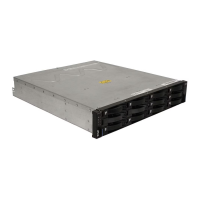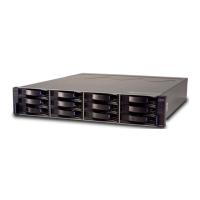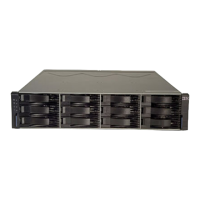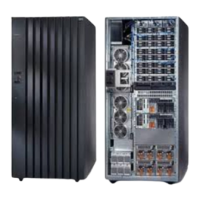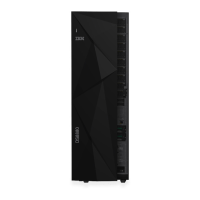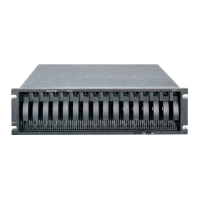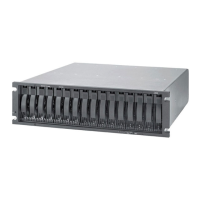Chapter 3. IBM System Storage DS3500 Storage System planning tasks 63
Draft Document for Review March 28, 2011 12:24 pm 7914DS3KPlanning_090710.fm
3.3.6 Logical drives and controller ownership
Logical drives, sometimes simply referred to as logical volumes or Logical Unit Numbers
(LUNs), are the logical segmentation of arrays. A logical drive or LUN is a logical structure
that you create on a storage subsystem for data storage. A logical drive is defined over a set
of drives called an array group which has a defined RAID level and capacity. The attributes of
the array are hidden from the host computer which is only presented with logical drive details
including capacity.
The DS3500 provides great flexibility in terms of configuring arrays and logical drives.
However, when assigning logical drives to the systems, it is very important to remember that
the DS3500 uses a preferred controller ownership approach for communicating with logical
drives, which means that every logical drive is owned by only one controller at a time. It is,
therefore, important at the system level to make sure that traffic is correctly balanced between
controllers with a dual controller DS3500 system, which is a fundamental principle for a
correct setup of the storage system.
Balancing traffic
Balancing traffic is unfortunately not always a trivial task. For example, if an application
requires a large disk space to be located and accessed in one chunk, it becomes harder to
balance traffic by spreading the smaller volumes among controllers. This can sometimes be
aided through the use of host based volume management software products.
In addition, typically, the load across controllers and logical drives is constantly changing. The
logical drives and data accessed at any given time depend on which applications and users
are active during that time period, hence the importance of monitoring the system.
Enhanced remote mirror (ERM) considerations
A secondary logical drive in a remote mirror will always have the same preferred owner as the
associated primary logical drive. For example, if controller A owns the primary logical drive in
the primary storage subsystem, controller A owns the associated secondary logical drive in
the secondary storage subsystem. If controller ownership changes on the primary logical
drive, then this will cause a corresponding controller ownership change of the secondary
logical drive also. For greater details on ERM see the IBM Midrange System Storage Copy
Services Guide, SG24-7822.
3.3.7 Storage partitioning
Storage partitioning adds a high level of flexibility to the DS3500 Storage System. The
DS3500 comes with four partitions by default, which can be expanded to a maximum of 64.
See 3.4, “Planning for premium features” on page 70 on for discussion on premium feature
Best practice: Here are guidelines for logical drive assignment and storage partitioning:
Assign logical drives across both controllers to balance controller utilization.
Use the manual method of creating logical drives, which allows greater flexibility for
configuration settings, such as enclosure loss protection and utilizing all drive loops.
Avoid mixing different workload types (transaction based and throughput based) on the
same array of disks.
Always leave a small amount of free space in the array after the logical drives have
been created.

